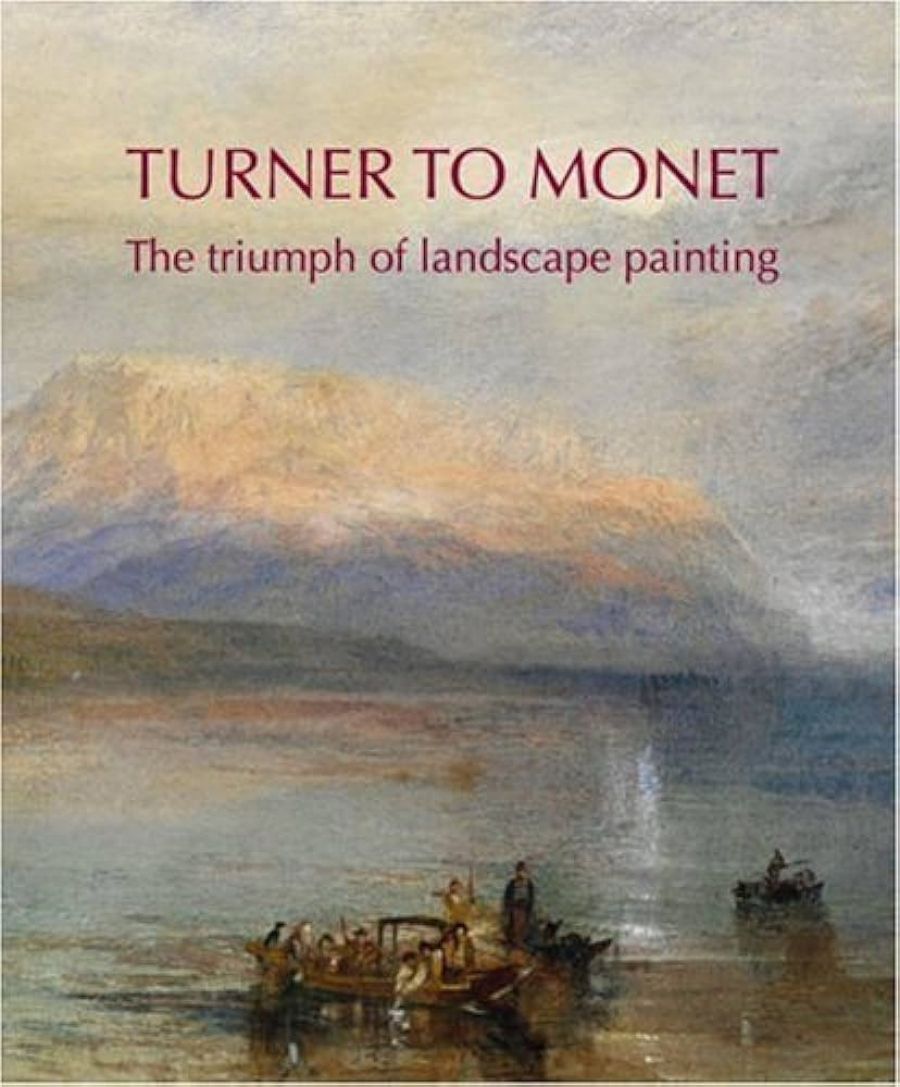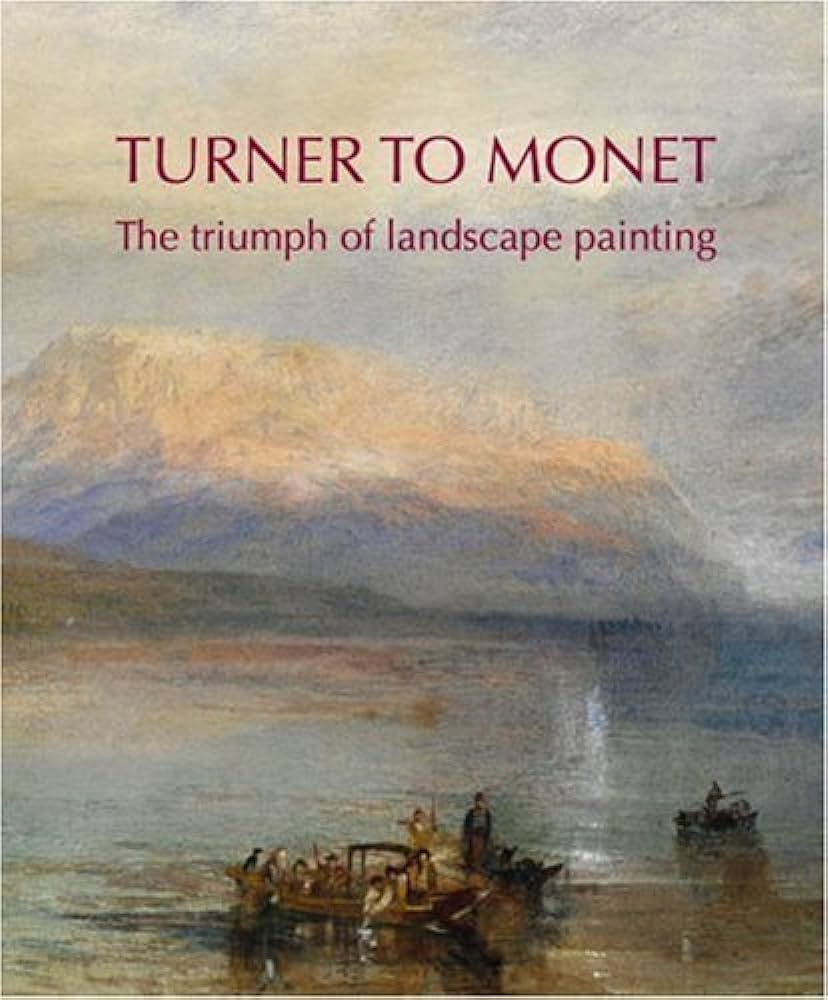
- Free Article: No
- Contents Category: Art
- Custom Article Title: Wuthering heights
- Review Article: Yes
- Article Title: Wuthering heights
- Online Only: No
- Custom Highlight Text:
In the 1990s the Smithsonian Institution conducted a comprehensive survey of visitors to exhibitions in the United States and concluded that the majority of viewers, while retaining impressions of individual objects, are unlikely to take much note of an exhibition’s theme. That came as a surprise to art gallery and museum professionals, who had recently put much effort into didactic displays, with a proliferation of wall texts and increasingly sophisticated methods of thematic presentation. It should have come as no surprise. The objects we see assembled in exhibitions were produced separately. The co-opting of works of art in an exhibition is in a critical sense different from the organisation of parts within a book or film, for example.
- Book 1 Title: Turner to Monet
- Book 1 Subtitle: The triumph of landscape painting
- Book 1 Biblio: NGA, $49.95 pb, 260 pp
- Book 1 Cover Small (400 x 600):

- Book 1 Cover (800 x 1200):

The selection of paintings by the exhibition’s three curators – Christine Dixon, Ron Radford and Lucina Ward – and the display, have been calculated to allow the viewer to make her own path through the exhibition. There is a noticeable absence of wall-texts and extended labels. Although many viewers choose to be wired to an audio guide, guidance is not needed for the exhibition. Non-art people know the subjects of these paintings, the lavender mist of Paris in winter, the intricate interlace of winter branches, the slush and snag of snow and ice in the river, blue days, round ponds, calm lakes reflecting the sky, birds flying across vast skies – the artists are no more expert about such things than we are.
Paintings by J.M.W. Turner, John Constable, John Glover, Camille Corot, Eugene von Guérard, Charles Conder, Arthur Streeton and Claude Monet are a comfortable basis for making comparisons with the work of artists no less famous, though less often exposed, in Australia, such as Gustave Courbet, Paul Gauguin, Caspar David Friedrich, Samuel Palmer, Carl Gustav Carus, Frederic Church, Thomas Cole – the line-up of major painters is formidable. There is a sufficient number of works by each of the key painters (five by the fabulous Friedrich, for example) to give a sense of complete representation, whereas the scope of the collective 102 paintings is unusually wide, extending across several regions of Europe and the new worlds of North America and Australia. Early in the display there is a wall hung with paintings of clouds, but otherwise the connections are virtually left to individual discovery. For me, the exhibition turns upon a significant sightline from Turner’s Stormy sea with blazing wreck c.1835–40 to Courbet’s brutal Wave c.1872 (see page 24).
Through one hundred years, European painters studied, in particular, the transient effects of sun, moon, cloud, fog, rain and wuthering wind. They had a special interest in describing the passing of time as marked by the repeated rhythm of the turning tide, incoming waves, the moon giving way to the sun, clouds rolling up or dipping below the horizon, rusty autumn, dead winter and bright spring. Some paintings express the grandeur of the turning world in a curve that embraces the whole landscape. Clouds lift over the rim of the rounding horizon in Streeton’s Early summer – gorse in bloom (1888). The same curve of the world sweeps through Paul Serusier’s Mother and child in a Breton landscape (1890), just as, at the start of the century, it rolled through Thomas Girtin’s Alnwick from Brizlee (c.1800) and Wilhelm von Kobell’s A country lane (c.1821).
From the outset, the idea of time passing included, or implied, the presence of the human being, around whom all of nature wheels. Nineteenth-century poets were as preoccupied with the theme as the painters. Wordsworth’s skater whizzing over the ice found, on stopping short,
yet still the solitary cliffs
Wheeled by me – even as if the earth had rolled
With visible motion her diurnal round!
Late in the century, Stéphane Mallarmé, looking at the Seine, marvelled at the paradox that the water flowed endlessly by yet stayed always the same. In the early twentieth-century, T.S. Eliot speculated abstractly that
Time present and time past
Are both perhaps present in time future,
And time future contained in time past …
At the still point of the turning world.
In terms of art history the exhibition is provocative. Academic art history was founded on the idea of the Western tradition evolving down a chain of inheritance, an idea later historians sought to complicate. The NGA’s director, Ron Radford, is probably responsible for the exhibition’s original idea of tracing history according to how it pans out, moving forward while looking back; which is the reverse of the museum’s visitor’s conditioned expectation of being drawn forward by what comes next. Throughout this exhibition, the next group of paintings is just as likely to be from another place and in a dissimilar style. Throughout, as a rule, links in style and approach become evident only when one looks back. Comparatively few regions are represented, and then not consistently through the century. The key to the selection seems to be that these were the home places and approaches of the painters of Australian colonial landscapes. It is the approach of a genealogist of style, tracking from a single artist to many ancestors. Consequently, the true sequence of this exhibition is backwards from the last paintings and back from each of the artists, to an array of styles and approaches at the start of the century.
This explains why viewing the works chronologically is like pushing against the current, why the first rooms are so diverse, stylistically complicated and represent more artists and regions than the later rooms, and why the exhibition, in the second half, funnels to a French conclusion (the few non-French paintings in the last rooms are close style cousins). That said, the rewards of reading backwards from the conclusion are more widespread than colonial art history. Monet’s landscape-based impressionism may be seen in the light of the earlier landscape traditions of Germany, America and Great Britain. The sharply focused realism of Friedrich and the spun-sugar brilliance of American and British luminism (that of Martin Heade and William Bell Scott) may be seen within the ancestry of French neo- and post-impressionist styles.
The exhibition opens up other random paths across cultures. To briefly mention two, the inclusion of a few American as well as the Australian paintings, with the works from various European regions, invites the question of how the painters of all regions (old and new) have adapted to local circumstances. It is not within the scope of the exhibition to show definitively that the adaptations made by the immigrants in America and Australia coalesced over time into the regional traditions of the new nations, although, from outside the exhibition, we may know that by 1800 the new American republic had fostered an education-oriented, consciously homespun and pious culture. American painters, while continuing to study in Europe, responded to the republican self-image. In the exhibition, Cole’s visionary mountainscape, Thomas Moran’s Yellowstone springs and Church’s image of the distant Andes spoke to Americans of a purity of wilderness and high national aspiration. It is worth speculating that, late in the century, Tom Roberts’s Bourke Street (1885–86/1890) and Arthur Streeton’s Fire’s On (1891) spoke to Australians on the eve of Federation of their modern nation forged in the heat and dust of a dry continent.
The exhibition makes some valuable points, chief among them that the concept of art history as progressive natural selection is not relevant to developments in art. Not only does the exhibition show the co-existence of disparate regional styles, it also shows that one school of art may produce remarkably dissimilar styles (in Turner and Constable, for example). By the same token, Turner and Monet appear to have much in common, as much if not more than either has with other painters. The similar plasticity of Paul Cézanne’s Viaduct at l’Estaque (1882) and Courbet’s pneumatic Source of the Lison (1864) is yet another connection that extends out of time – I heard more than one viewer remark on the extraordinary similarity between Source of the Lison and a well-known painting by the Australian surrealist James Gleeson. It has been the exhibition’s achievement to yield spontaneous insights between the paintings of regional cultures in the nineteenth century, and to cast a problematic light upon the concept of evolution in art.


Comments powered by CComment